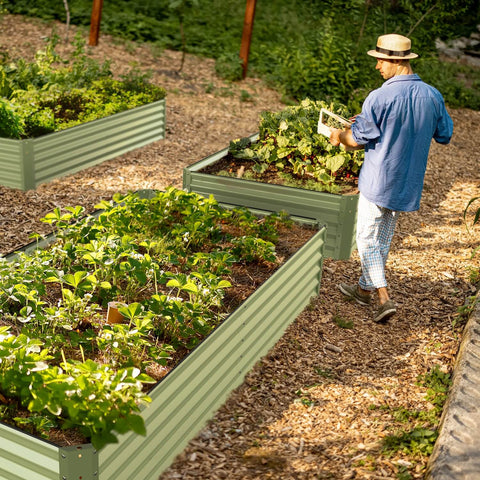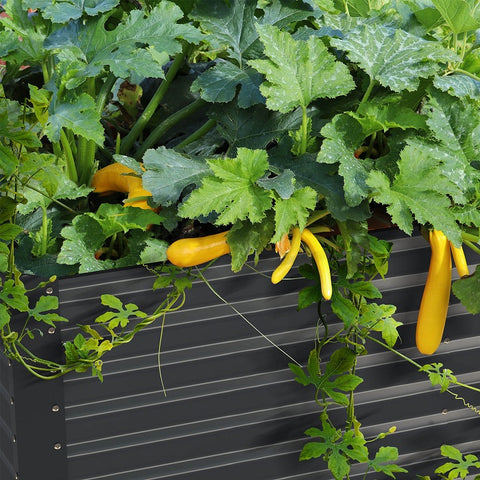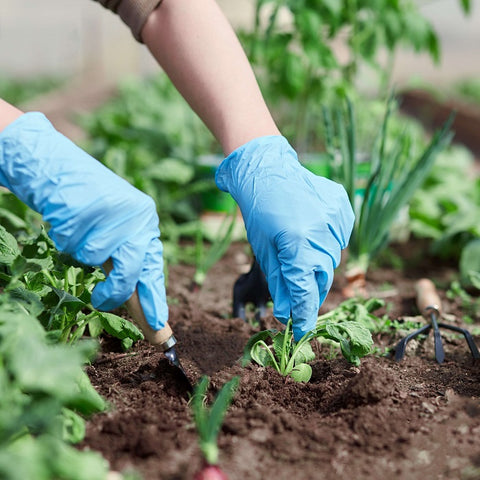Summer is a season of blooming flowers, fruits and vegetables, which can also be said to be a harvest season. And powdery mildew is a more common disease in flowers and vegetables, watching it attack their own vegetables and plants, light makes the plant leaves gray, heavy wrinkled black, flower buds off coke, fruit production, is very disappointing.The following content also has some reference value for raised garden beds.
Today I will share with you the causes of powdery mildew and the ways to prevent it. I hope it will be useful to you
1
etiology
Powdery mildew is caused by fungi of the powderomycetes family, which is a common plant disease in gardens. It is an exogenous fungal disease. It only grows on the surface of leaves and forms gray spots, which will not destroy a large number of cells.
2
Most common environment and plant
Powdery mildew is most likely to be caused by high humidity and intermediate temperatures (10-30℃), which is why the disease is most prevalent in late summer, when night temperatures begin to cool and early morning temperatures approach the critical point of dew formation, with extremely high humidity.
Those who like to grow vegetables will find that powdery mildew often occurs on vegetables and fruits such as cucumber, zucchini, strawberry, tomato, eggplant, pepper, pumpkin, bitter gourd and strawberry.

3
Take precautions
(1) The soil must be sterilized and disinfected before sowing;
(2) The disease resistance of plants could be improved by applying fully decomposed organic fertilizer and adding phosphorus and potassium fertilizer;
(3) The planting density is suitable and the old leaves at the bottom are knocked off in time, which is conducive to the ventilation and light in the field;
(4) Timely remove diseased leaves, diseased seedlings, residual branches, etc., out of the planting basin, and bury or burn them intensively;
(5) Reduce humidity, scientific watering (see dry and wet), create an environment that is not conducive to the occurrence and development of powdery mildew, especially when producing vegetables and fruits that are often caused by powdery mildew.

Remarks:
(1) If you plant vegetables in some relatively shady and humid places in the courtyard, try not to choose plants that are prone to powdery mildew;
(2) For example, cucumber and pumpkin powdery mildew, after the end of the harvest, should immediately remove the melon vine, these infected vine leaves should be bagged and discarded, can not be used for composting.
4
Two green control methods
When you do not do a good job of prevention, suddenly one day found that the plant has been infected with powdery mildew, you can solve this problem: first of all, remove the leaves of the very serious disease plants in time to prevent further infection of other plants. Then you can do some green fungicide spray control. Common fungicides more effective against powdery mildew are these:
- Milk method
(1) Find a small watering can and mix a ratio of milk (just ordinary bottled milk) to water: 1 to 10. First break off the seriously affected leaves, and then spray diluted milk on the plants and leaves, as much as possible.
2) Spray every 3-5 days after that. After a period of time you will find that the effect is quite remarkable.
- Liquor method
According to his practice of growing vegetables for many years, a Shanghai vegetable friend summed up a method to prevent and control vegetable powdery mildew by spraying diseased vegetable plants with liquor diluent.
(1) Take several milliliters of liquor with 42 degrees Celsius and dilute the liquor stock solution to water at a ratio of 1:1000;
(2) Then, it is poured into the manual sprayer to spray the diseased plants. The amount of spray shall be subject to the white rust being washed clean. The effect is so pronounced that once the rust is washed off the plant, powdery mildew never occurs again.
This treatment works well with vegetables such as pumpkins, eggplants and cucumbers, as well as strawberries. It is not only a control agent, but also a nutrient protector.









